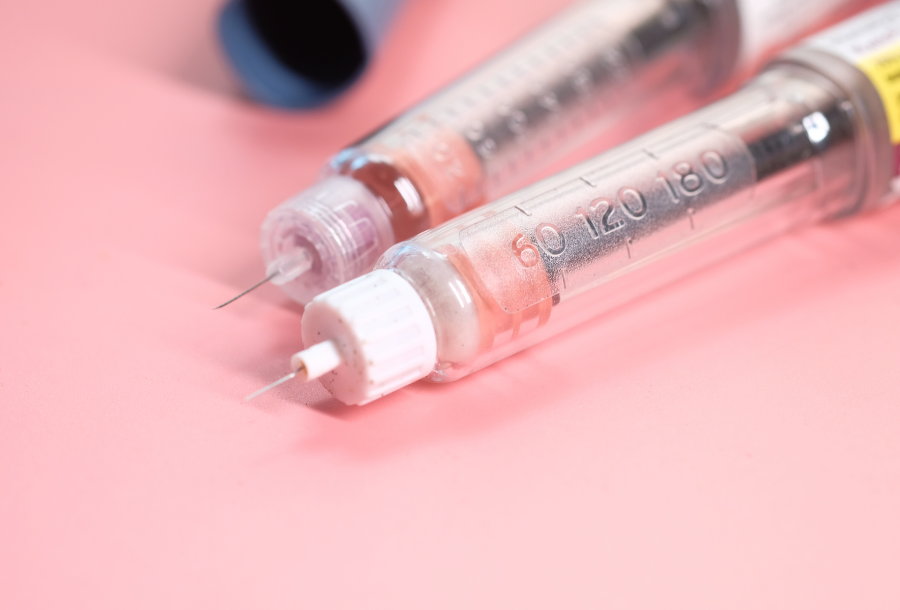
The normal range for blood glucose levels australia
July 8, 2022
How do you know if your blood glucose levels are within the normal range? Learn about the normal range for blood glucose levels in Australia and how to measure your own glucose levels.
Key takeaways:
- Australia's normal blood glucose range for adults is 4 to 7.8 mmol/L or 70 to 140 mg/dL.
- There are many ways to measure your glucose levels such as using a blood glucose metre, continuous glucose monitor (CGM) or various blood tests.
- Lifestyle optimisation is important for maintaining healthy blood glucose levels. This includes a healthy diet, regular exercise, good quality sleep and managing stress.
The amount of glucose, or sugar, in a person's blood at any time of day is known as blood glucose levels. Glucose is the body's preferred source of energy, and is made by the body and also ingested from the foods you eat. This article will walk you through the normal blood glucose levels accepted in Australia to help you understand what your blood glucose levels mean.
What are considered normal blood glucose levels in Australia?
Healthy blood glucose levels are important for overall metabolic health and wellbeing. While people with type 1 diabetes, type 2 diabetes, gestational diabetes or other metabolic conditions need to monitor their glucose levels regularly, those without these conditions can benefit from gaining an understanding of their glucose control.
Elevated blood glucose levels over a period of time can lead to health complications, such as type 2 diabetes and heart disease. Conversely, low blood sugar levels can also cause significant problems, such as dizziness and fainting.
Australia's normal blood glucose range for adults is 4 to 7.8 mmol/L or 70 to 140 mg/dL. However, this target range can change based on your age and state of health.
Those who have higher than normal glucose levels but not high enough to be classified as diabetes in Australia are considered to have prediabetes. Those with prediabetes are at a higher risk of developing type 2 diabetes and cardiovascular disease. Those with prediabetes may have glucose levels between 7.8-11.1 mmol/L in an oral glucose tolerance test (OGTT).
Those with OGTT of greater than 11.1 mmol/L may be in the type 2 diabetes category, however further tests may be required for diagnosis.
How do you measure blood sugar levels?
In Australia, there are several methods for measuring blood sugar levels. A common method is to use a blood glucose metre to determine the amount of glucose in your blood. This method uses a finger prick to measure your glucose readings at any one time.
Another way to measure blood sugar levels is via blood tests. There are various types including a random blood sugar test, fasting plasma glucose test, a1c testing (which determines your average blood glucose levels over the last three months), glucose challenge test and the OGTT. Your test results will be interpreted for you by your doctor.
To get more data across a period of time, a continuous glucose monitor (CGM) is a fantastic option. A CGM sensor is a glucose monitoring device that inserts on your arm and measures your glucose levels continuously. A small transmitter in the device transfers the information to an app on your phone to display the data. A CGM device is a great option to help you identify patterns in your glucose over a period of time, with many sensors lasting for 14 days each.
What can cause high or low blood glucose levels?
There are several factors that can cause fluctuations in your blood glucose levels. For those with diabetes in Australia, this needs to be managed by your diabetes care team. While fluctuations in glucose levels are normal for those without diabetes, evidence suggests that aiming for stable glucose levels can have a positive effect on your overall metabolic health long-term.
Common lifestyle causes of high blood glucose levels
- Consuming large amounts of high carbohydrate foods
- Lack of exercise
- High intensity exercise (this is a normal reaction to intense exercise and is positive for the long-term)
- Stress
- Dehydration
- Illness
Common lifestyle causes of low blood glucose levels
- Drinking alcohol
- Timing and intensity of exercise
- Not eating enough
- Not eating enough carbohydrates
How can you maintain healthy blood sugar levels?
Not receiving proper treatment for low or high blood sugar levels can be dangerous and lead to health complications, particularly in those with diabetes. People with diabetes should have a thorough healthcare plan to ensure appropriate management of their condition.
For those who want to improve their metabolic health by stabilising their blood glucose levels and reducing their risk factors for developing diabetes, lifestyle optimisation is key. This may include:
- Eating a healthy diet that includes plenty of vegetables, protein, healthy fats and complex carbohydrates
- Ensuring you exercise regularly
- Maintaining a healthy weight
- Minimising processed foods and high sugar foods where possible
- Avoiding tobacco use
- Reducing your alcohol consumption
- Managing your stress
- Prioritising quality sleep
If you're struggling with your blood glucose levels, it's important to seek help from your healthcare provider to get individualised support. This is vital if you have diabetes, as proper management is key for this condition.
Using a CGM system to help you understand which foods and lifestyle habits suit your body can be a fantastic strategy to help stabilise your blood glucose levels and improve your metabolic health. Vively is an Australian holistic health app that combines CGM with metabolic health education and support to help you reach your health goals.
Meet our team.
Subscribe to our newsletter & join a community of 50,000+
Get access to limited content drops, free invites to expert fireside chats, and exclusive offers.

The normal range for blood glucose levels australia
How do you know if your blood glucose levels are within the normal range? Learn about the normal range for blood glucose levels in Australia and how to measure your own glucose levels.
Key takeaways:
- Australia's normal blood glucose range for adults is 4 to 7.8 mmol/L or 70 to 140 mg/dL.
- There are many ways to measure your glucose levels such as using a blood glucose metre, continuous glucose monitor (CGM) or various blood tests.
- Lifestyle optimisation is important for maintaining healthy blood glucose levels. This includes a healthy diet, regular exercise, good quality sleep and managing stress.
The amount of glucose, or sugar, in a person's blood at any time of day is known as blood glucose levels. Glucose is the body's preferred source of energy, and is made by the body and also ingested from the foods you eat. This article will walk you through the normal blood glucose levels accepted in Australia to help you understand what your blood glucose levels mean.
What are considered normal blood glucose levels in Australia?
Healthy blood glucose levels are important for overall metabolic health and wellbeing. While people with type 1 diabetes, type 2 diabetes, gestational diabetes or other metabolic conditions need to monitor their glucose levels regularly, those without these conditions can benefit from gaining an understanding of their glucose control.
Elevated blood glucose levels over a period of time can lead to health complications, such as type 2 diabetes and heart disease. Conversely, low blood sugar levels can also cause significant problems, such as dizziness and fainting.
Australia's normal blood glucose range for adults is 4 to 7.8 mmol/L or 70 to 140 mg/dL. However, this target range can change based on your age and state of health.
Those who have higher than normal glucose levels but not high enough to be classified as diabetes in Australia are considered to have prediabetes. Those with prediabetes are at a higher risk of developing type 2 diabetes and cardiovascular disease. Those with prediabetes may have glucose levels between 7.8-11.1 mmol/L in an oral glucose tolerance test (OGTT).
Those with OGTT of greater than 11.1 mmol/L may be in the type 2 diabetes category, however further tests may be required for diagnosis.
How do you measure blood sugar levels?
In Australia, there are several methods for measuring blood sugar levels. A common method is to use a blood glucose metre to determine the amount of glucose in your blood. This method uses a finger prick to measure your glucose readings at any one time.
Another way to measure blood sugar levels is via blood tests. There are various types including a random blood sugar test, fasting plasma glucose test, a1c testing (which determines your average blood glucose levels over the last three months), glucose challenge test and the OGTT. Your test results will be interpreted for you by your doctor.
To get more data across a period of time, a continuous glucose monitor (CGM) is a fantastic option. A CGM sensor is a glucose monitoring device that inserts on your arm and measures your glucose levels continuously. A small transmitter in the device transfers the information to an app on your phone to display the data. A CGM device is a great option to help you identify patterns in your glucose over a period of time, with many sensors lasting for 14 days each.
What can cause high or low blood glucose levels?
There are several factors that can cause fluctuations in your blood glucose levels. For those with diabetes in Australia, this needs to be managed by your diabetes care team. While fluctuations in glucose levels are normal for those without diabetes, evidence suggests that aiming for stable glucose levels can have a positive effect on your overall metabolic health long-term.
Common lifestyle causes of high blood glucose levels
- Consuming large amounts of high carbohydrate foods
- Lack of exercise
- High intensity exercise (this is a normal reaction to intense exercise and is positive for the long-term)
- Stress
- Dehydration
- Illness
Common lifestyle causes of low blood glucose levels
- Drinking alcohol
- Timing and intensity of exercise
- Not eating enough
- Not eating enough carbohydrates
How can you maintain healthy blood sugar levels?
Not receiving proper treatment for low or high blood sugar levels can be dangerous and lead to health complications, particularly in those with diabetes. People with diabetes should have a thorough healthcare plan to ensure appropriate management of their condition.
For those who want to improve their metabolic health by stabilising their blood glucose levels and reducing their risk factors for developing diabetes, lifestyle optimisation is key. This may include:
- Eating a healthy diet that includes plenty of vegetables, protein, healthy fats and complex carbohydrates
- Ensuring you exercise regularly
- Maintaining a healthy weight
- Minimising processed foods and high sugar foods where possible
- Avoiding tobacco use
- Reducing your alcohol consumption
- Managing your stress
- Prioritising quality sleep
If you're struggling with your blood glucose levels, it's important to seek help from your healthcare provider to get individualised support. This is vital if you have diabetes, as proper management is key for this condition.
Using a CGM system to help you understand which foods and lifestyle habits suit your body can be a fantastic strategy to help stabilise your blood glucose levels and improve your metabolic health. Vively is an Australian holistic health app that combines CGM with metabolic health education and support to help you reach your health goals.
Get irrefutable data about your diet and lifestyle by using your own glucose data with Vively’s CGM Program. We’re currently offering a 20% discount for our annual plan. Sign up here.
Next articles

Understanding the causes of insulin resistance
Unravel the mystery of insulin resistance, its causes and implications for your health. Explore evidence-based strategies to prevent and manage this condition and optimise your metabolic health.



 Share
Share Tweet
Tweet Share
Share














